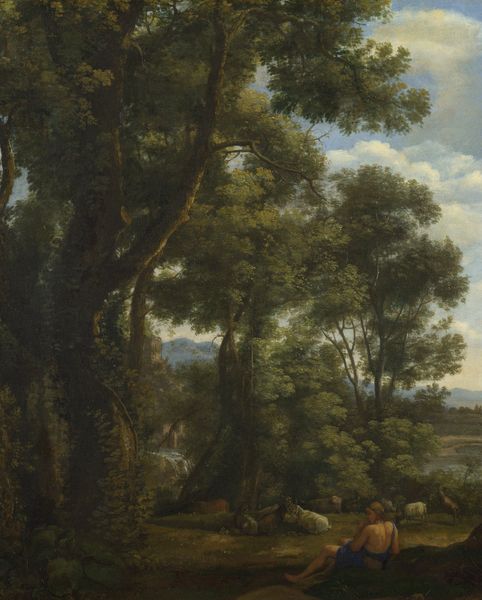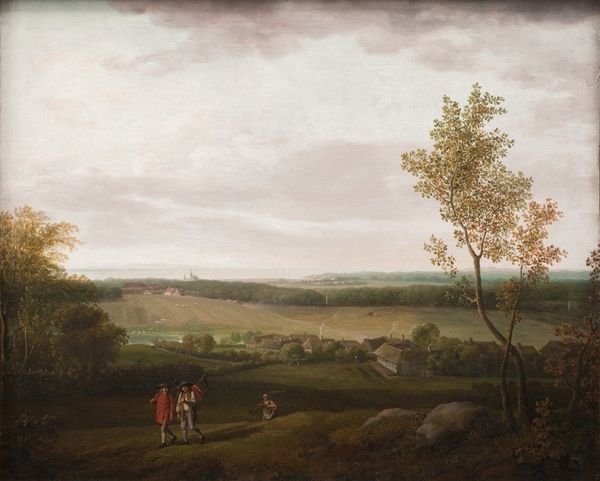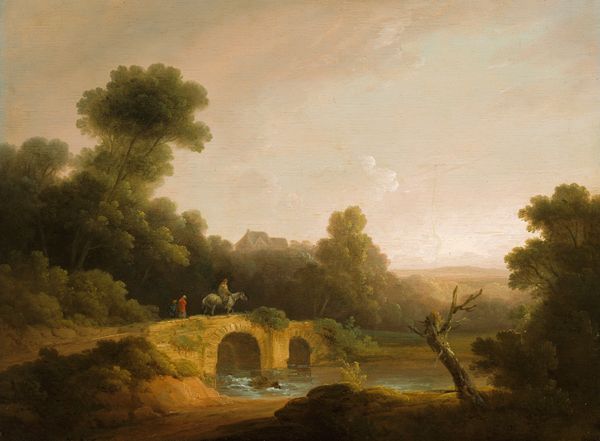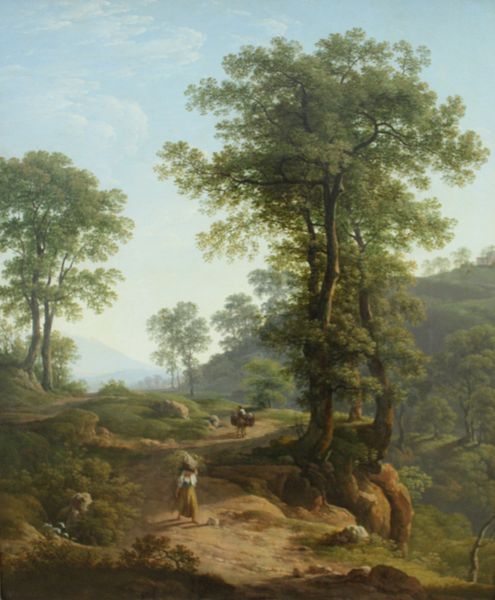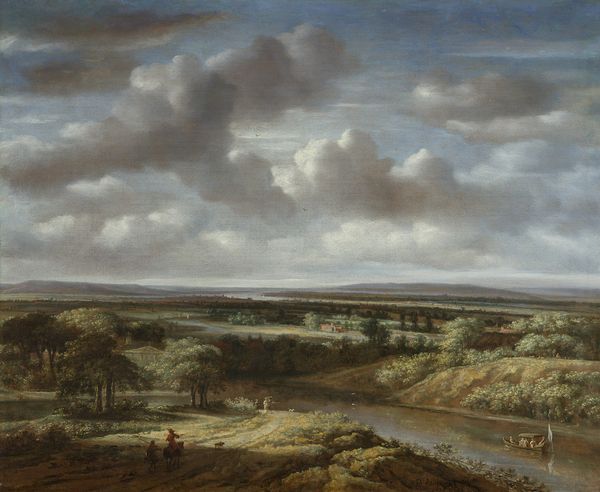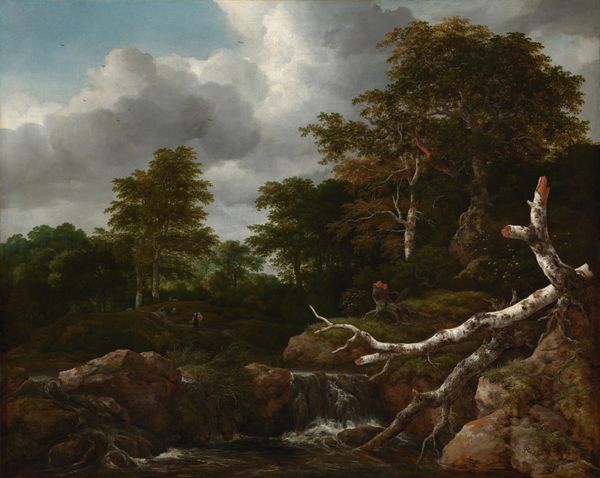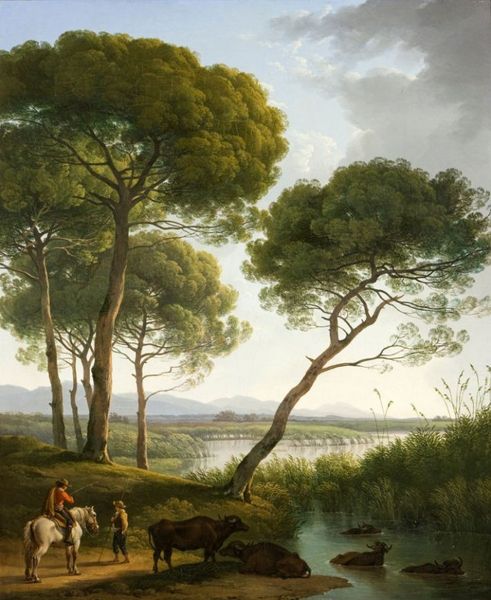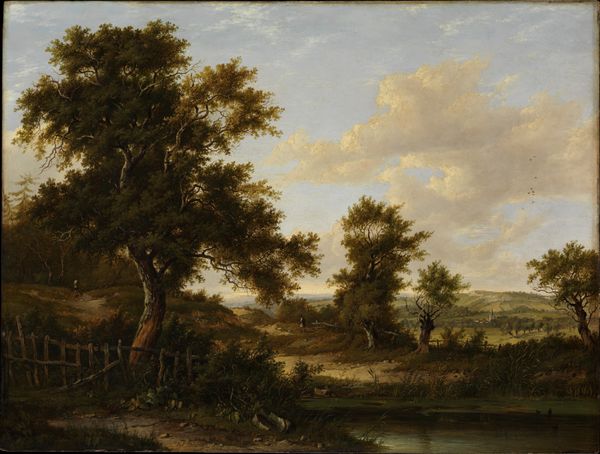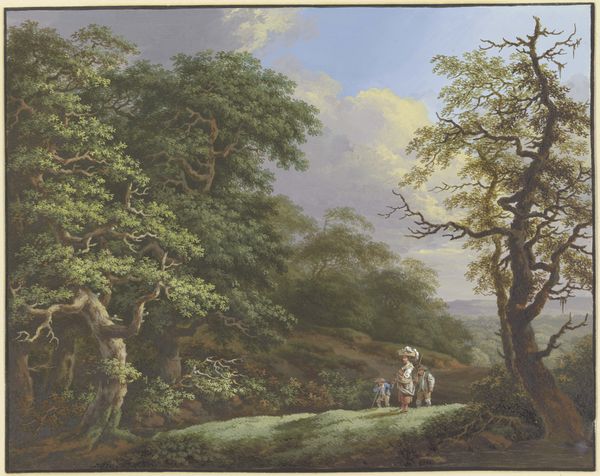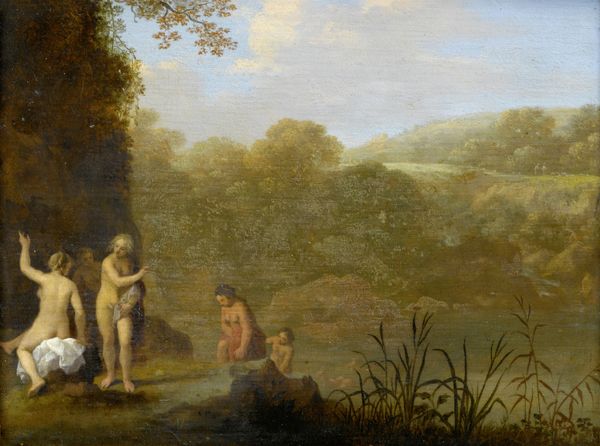
painting, plein-air, oil-paint
#
painting
#
plein-air
#
oil-paint
#
landscape
#
oil painting
#
romanticism
#
cityscape
#
realism
Dimensions: height 87 cm, width 129 cm
Copyright: Rijks Museum: Open Domain
Pieter Rudolph Kleijn made this scenic view using oil paints, a medium that was becoming increasingly industrialized in the early 19th century. The way the paint is applied gives us a sense of the working conditions that shaped its creation. Notice how the brushstrokes are blended to create soft, subtle gradations of light and atmosphere; look at the way the clouds take shape. This level of detail required patience and skill, suggesting Kleijn took pride in his craft, even as painting became more commercialized. Consider, too, the landscape itself. The scene represents an idealized view of nature, untouched by industrialization, yet its very creation depended on access to manufactured materials and a market for art. In appreciating Kleijn's artistry, it is important to remember the broader social context in which it was made. By acknowledging the relationship between art, labor, and capitalism, we can gain a deeper understanding of the painting's meaning and significance.
Comments
rijksmuseum about 2 years ago
⋮
From 1807 to 1809 Kleijn worked in and around Paris. Two of his landscapes from this period reveal his gratitude to Louis Napoleon. The King had bought two châteaux at Saint-Leu-la-Forêt, while his brother Napoleon owned the Château de Saint-Cloud (portrayed in the companion piece). Although this picture received great praise, it was also criticized for being too detailed and realistic. Kleijn did indeed take a grander approach in his view of Saint-Cloud.
Join the conversation
Join millions of artists and users on Artera today and experience the ultimate creative platform.
